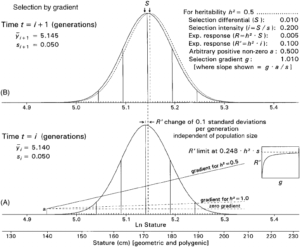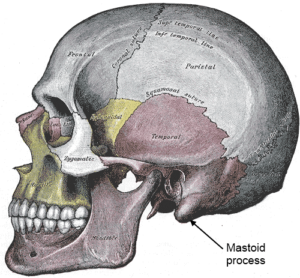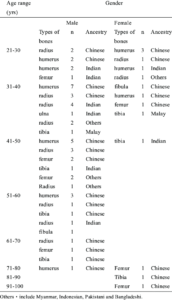Can You Find Your DNA from Bones?
Can you tell race from DNA? The answer is yes! You can guess ancestry through Bone analysis. The recovered remains of human bones through ancestry assessment can be used in forensic anthropological analysis to locate the ancestry of human remains. What can the skeleton remain to reveal about the identity of a person? A lot! The bones in a human skull can be used to accurately predict inherited features in any human being.
When the morphology, or shape of a skin is examined by Forensic anthropologists, the ancestry of any bone can be determined. When results that are obtained are compared with data from populations worldwide, the individual relationship of persons to the world can be ascertained. How can you determine Ethnicity from face? We shall be taking a detailed analysis of how this can be done through proven scientific means.
What are the Shapes of Bones?
There are four shapes of bones in the human body that we are going to consider in this article. There are 206 bones in the human body and they can be classified into four types in the following categories:
- Long
- Short
- Flat
- Irregular
Each of the bones serves specific functions in the body and some of them serve more than one purpose. We shall take a look at each of them; Forensic anthropologists use the knowledge of the bones and have come up with a solution to what bones determine height. The knowledge of this and others is used to determine the ancestry of people who have died years back when the bones are analyzed in the laboratory.
Discovering one’s ethnicity is not a straightforward endeavor, yet there are several methods to ascertain it. Some intellectuals assert that ethnicity can even be determined through a photograph. Genetics Ancestry consistently offers insights on matters pertaining to DNA, ethnicity, and ancestry.
Find Your Ethnicity From Photo
Long Bones
This category of bones is located in the arms and legs of the human being. The long bones in the ram are known as phalanges, humerus, radius, ulna, and metacarpals. Long bones in the leg region are known as femur, tibia, fibula, metatarsals, and phalanges. All the long bones consist of two parts – diaphysis and epiphysis. How can ethnicity be told from bones? The great strides made through the study and functions of the bones in the human body make it possible for scientists to tell the identity or race of any person through the recovered remains of the person’s bones. Which one is best for finding clues to ancestry? The skull of course!
The shaft of the pong bone is known as Diaphysis. The end of the long bone is known as Epiphysis. There is also the Epiphyseal Plate which forms the last part of the long bone under discussion. The giant strides made in the study of the human bone make it pretty easy to tell the ethnicity of a dead person from Bones.
Short Bones
Another category of bones that makes up the four is the short bone. The short bones are 32 in number in the human body and they are used to facilitate the movement as well as strength in the complex parts of the body. The details of all the bones that make up the short bones are well analyzed and known; the knowledge of this is used to determine a clinical answer to the question: Can you Tell ethnicity From Bones?
The Flat Bone
The flat bone is known to be the armor of the body. They provide the needed structure for the shape of the entire body according to scientific facts. The provision of strong insertion points for tendons and muscles in the body is provided by the bones.
Skull
The bones of the skull represent the strongest point of reference that Forensic anthropologists use in determining the race of the dead person through the bone. If the expert has the dried-up skull of a dead person and you ask the question: Can you Tell ethnicity From Bones? The answer that you will get is a resounding yes!
Irregular Bones
Some bones are not long, short, or flat in the human body. They are referred to as irregular bones in the body. They are complicated in shape and are designed to fit perfectly into the role that they play in the human body. They possess complicated shapes that are used as insertion points in muscles, tendons, and ligaments. There are also the Sesamoid Bones that come up in the body as a result of the friction along tendons and ligaments. Experts list the patella as a clear example of this type of bone. The great inroads made in the complex of the bones in the human body have been used over the years by experts to predict with clinical precision which bone is used to determine Ethnicity. Why it is difficult to determine the race of a skeleton? This will be difficult if the features to be used in the analysis are not available.
Is it Possible to Determine a Race Through a Skeleton?
How to determine a race of skeletons? We shall go into proven methods that can be used to determine the race of the skull of a dead person. The experts determine ancestry by examining the shape (morphology) of the skull and taking measurements of its vault (cavity) and the face. When the results are compared with data from populations worldwide; the relationship of the dead individual to the world map can be accurately predicted.
Only three ancestral groups were represented in Chesapeake Bay in the 17th century. They are the:
- American Indians
- Europeans
- Africans from the sub-Saharan region
The European Characteristics
Individuals that have European ancestry have straight face profiles in the company of narrower faces with projecting, sharply angled nasal bones. They have the following features:
- Long and narrow face
- Sloping eye orbits
- Larger nasal spine
In numerous countries, there is a keen interest in uncovering ancestral religions through DNA research. Genetic Ancestry offers valuable insights into these inquiries.
Can You Find Your Religion From DNA?
The Narrow, High Nasal Opening
From the above results, it is clear that the effective answer to Can you tell race from bones can is a yes. By following the methods we have so far analyzed and others to follow in this article, it is clear that identity can be discovered through the analysis of the bones of the remains of persons. It is a clear means of locating the remains of those who have gone missing.
The American Indian Characteristics
There are Racial differences in skull shapes. The American Indian characteristics skull shape is different from other races. The features are shown below:
- A wide face and short, broad cranial vault
- Large prominent cheekbones
- The nasal opening flared at the base (heart-shaped)
- Rounded eye orbits
- Large teeth with shovel-shaped
- Incisors
Hair texture can vary widely within ethnic groups, and factors like climate, genetics, and hair care practices contribute to this diversity.
Find Your Ethnicity From Hair?
Sub-Saharan African Characteristics
Can race be identified by bones? Yes, it can. Particular features are used to identify the race of Sub-Saharan Africans Characteristics by Forensic anthropologists. The following features are used to identify the remains of the skull that belongs to the Sub- Saharan Africa:
- Facial prognathism (facial forwardness)
- A smooth and depressed inferior nasal border
- Wide nasal chamber
- Smaller nasal spine
- Rectangular eye orbits
- Large teeth, wrinkling of molars
When we go by the available statistics with proven scientific evidence, it is stated categorically that it is possible to tell race from the bones of dead people. Can you tell race from bones? Going by the facts stated above and several supporting evidences; the ethnicity of an individual can be traced through the remains of the skull when scientific analysis of the bones is taken in the lab. Separating the skull of the Native American skull vs Caucasian skull from each other can be done when the features representing the three tribes represented in the Chesapeake Bay in the 17th century are placed side by side with the skull of the person. The answer to how can ethnicity be told from bones has been given above. There are some platforms from which you can find your Ethnicity which includes GEDmatch.
Numerous apps claim to determine ethnicity, yet many individuals are entangled in a web of facts and myths surrounding this topic. Genetics Ancestry provides a comprehensive information resource, dispelling myths and offering clarity on the subject.
Ethnicity Estimation Apps
The Bones that Can Be Used to Determine the Age
What bones can be used to determine age? The skeleton can be used as a marker to effectively determine the age of the person. The maturity of the teeth and bone takes place at a predictable rate. It is easy to tell someone’s race from bones. The bones of babies begin growth from the womb. The normal growth of the bones stops between the ages of 17 and 25 years.
There are several ways through which the skeleton records the age of an adult. There are age-related changes that happen in the bone setup of individuals as the years add on. What bones determine height? The answer to that is not farfetched.
Final Thought
We have shed light on how the skull can be used to determine the ancestry of any human being. What are the features of a Caucasian skill? The available facts show the features that can be used to identify the Caucasian from the midst of the crowded pack. The dominant answer to the poser: How to determine a race of skeleton has been given above. In all, it has been established that it is possible to trace the ancestry of any dead person through the skeleton. The rallying point among the bones in the body is the skull.
Read More At:
- Can You Find DNA From Ashes?
- How to Find Old Orphanage Records?
- Ethnicity Estimation Apps For iPhone, iPad, Android
- What Is The Iberian Peninsula Ancestry?
FAQ’s
How accurate is it to determine ethnicity from bones?
The accuracy of determining ethnicity from bones depends on a number of factors, including the quality of the bones, the methods used, and the expertise of the scientist. In general, the accuracy is highest for recent skeletons and when multiple methods are used.
What are the ethical considerations for determining ethnicity from bones?
The ethical considerations of determining ethnicity from bones include the potential for misidentification, discrimination, and the need to respect cultural sensitivities.
Can DNA analysis of bones reveal ethnicity?
DNA analysis can provide more accurate information about a person’s genetic ancestry, which can include insights into their ethnic background.





